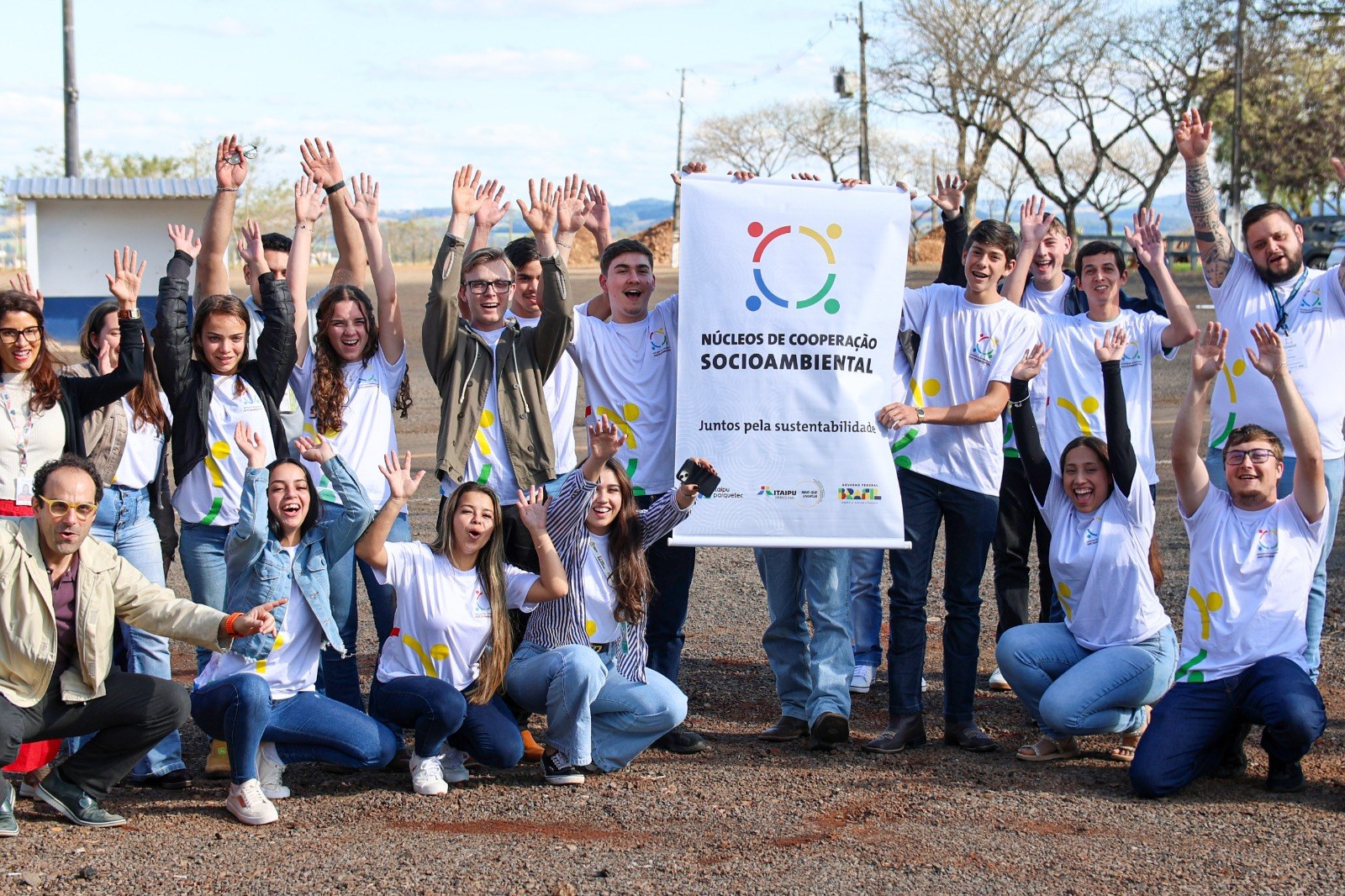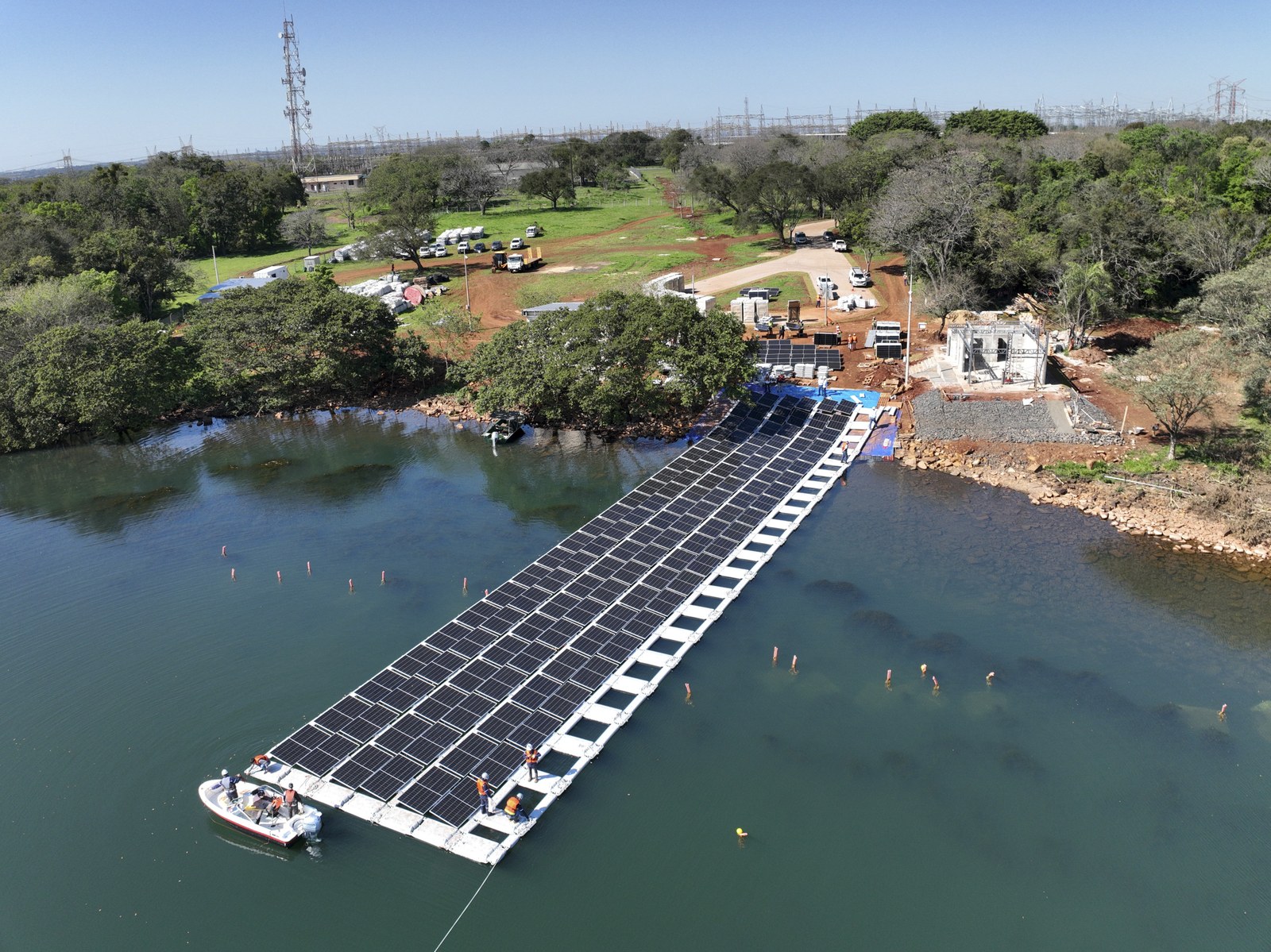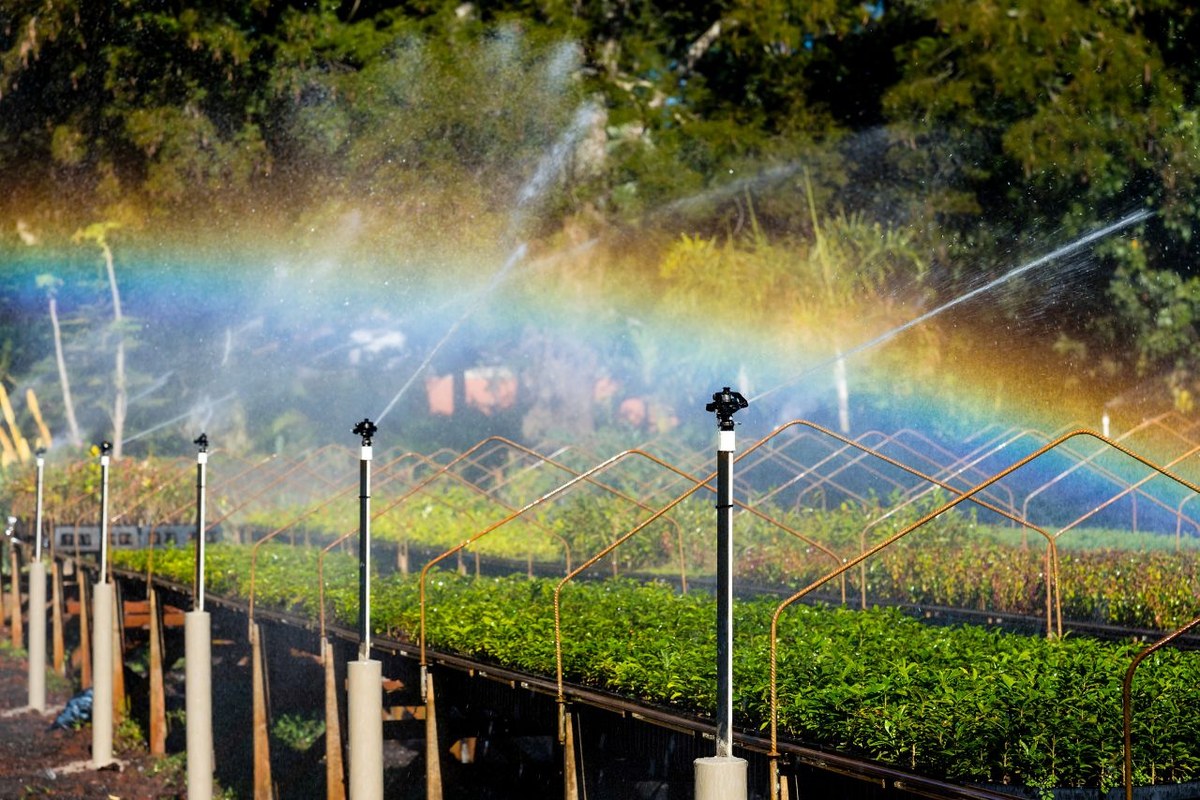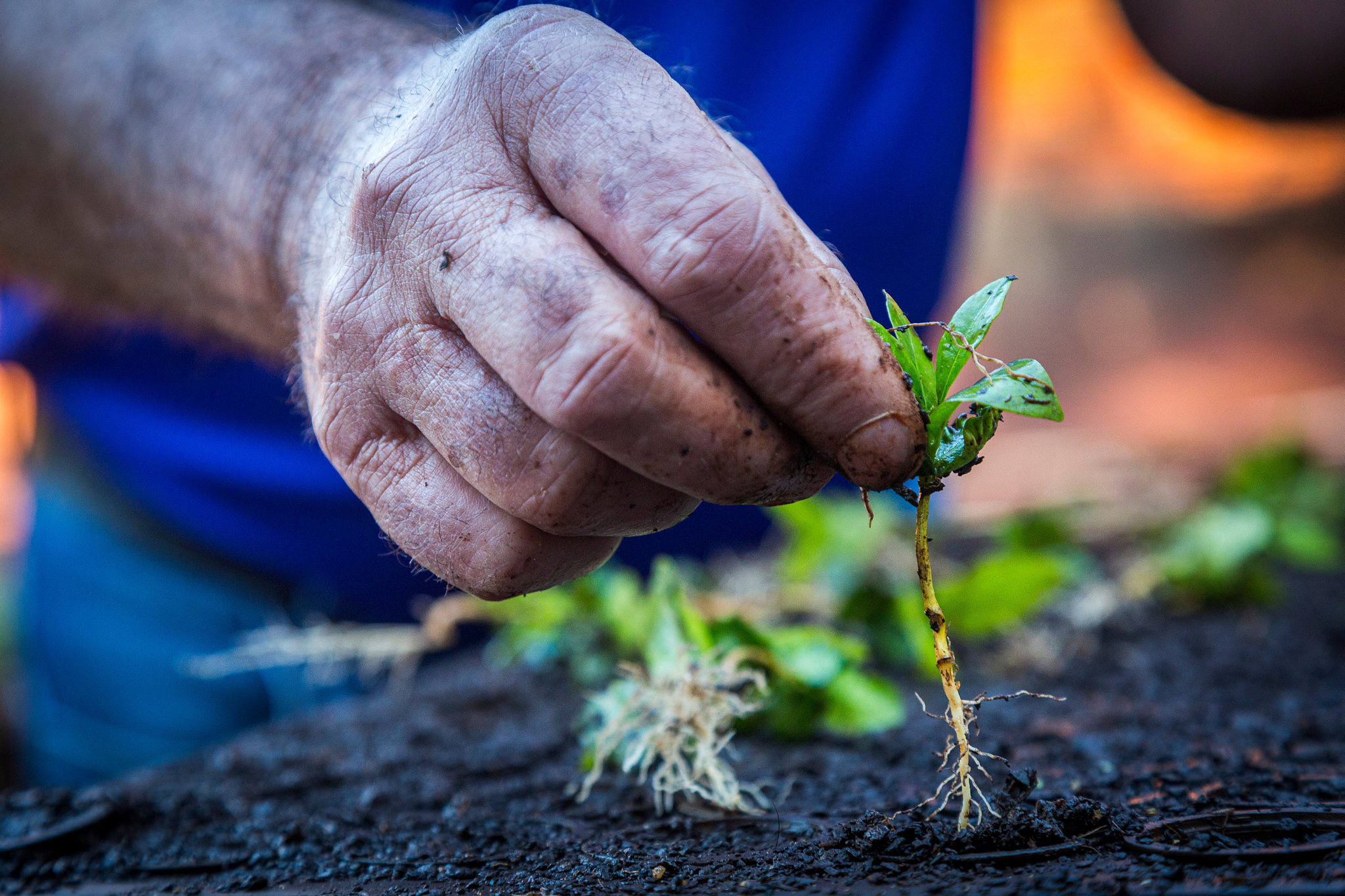

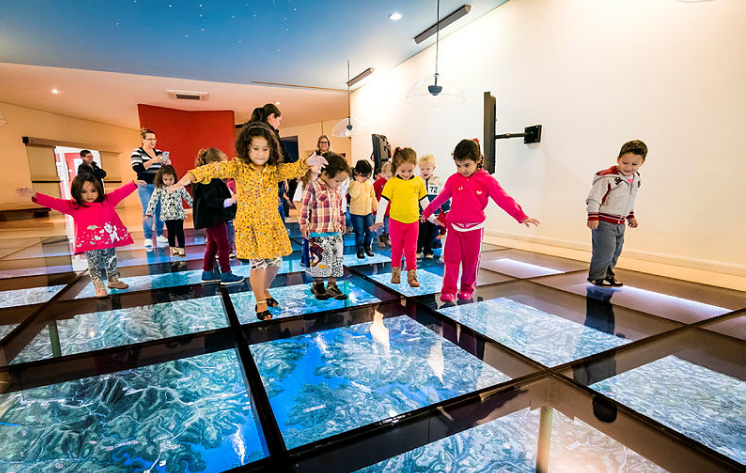
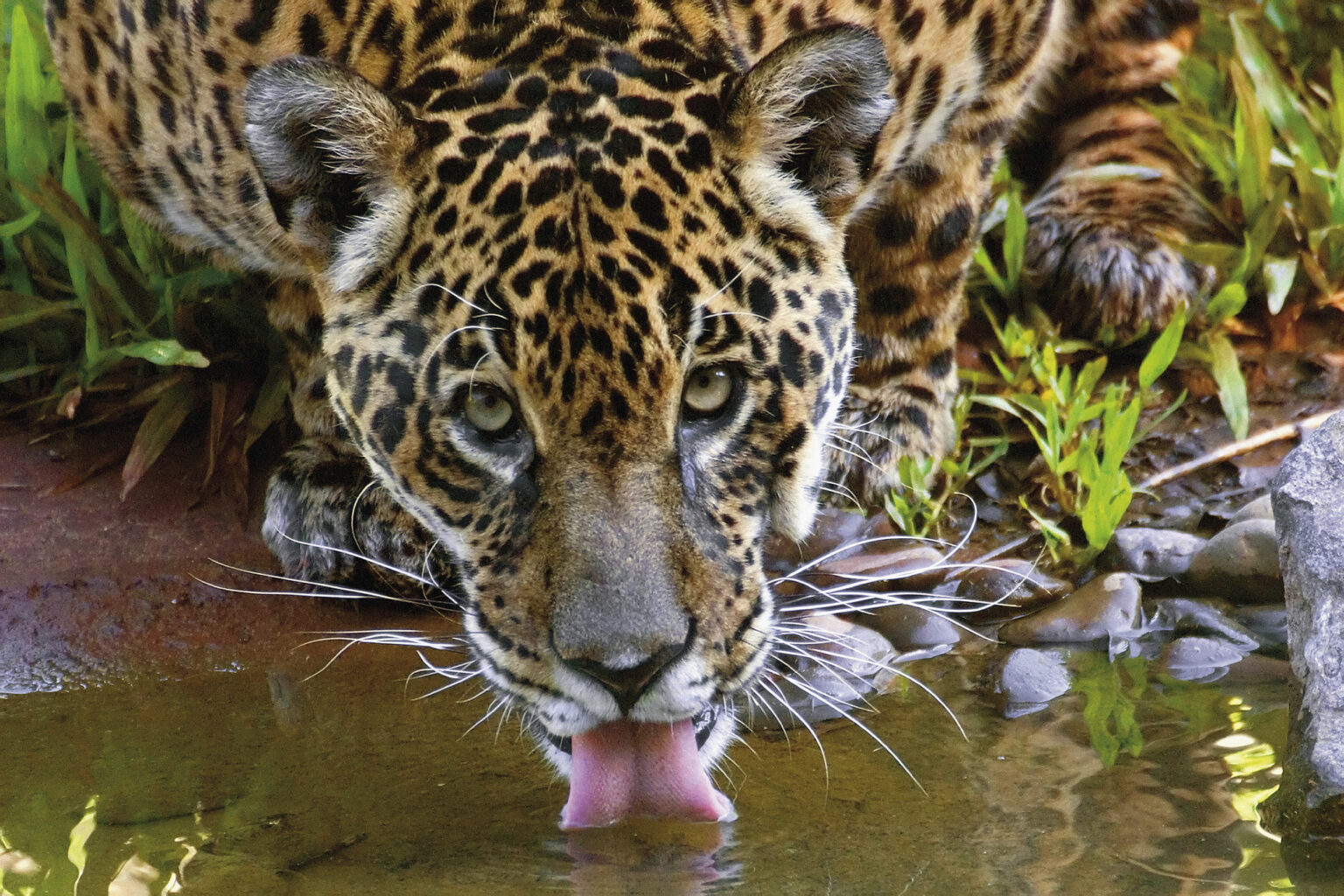

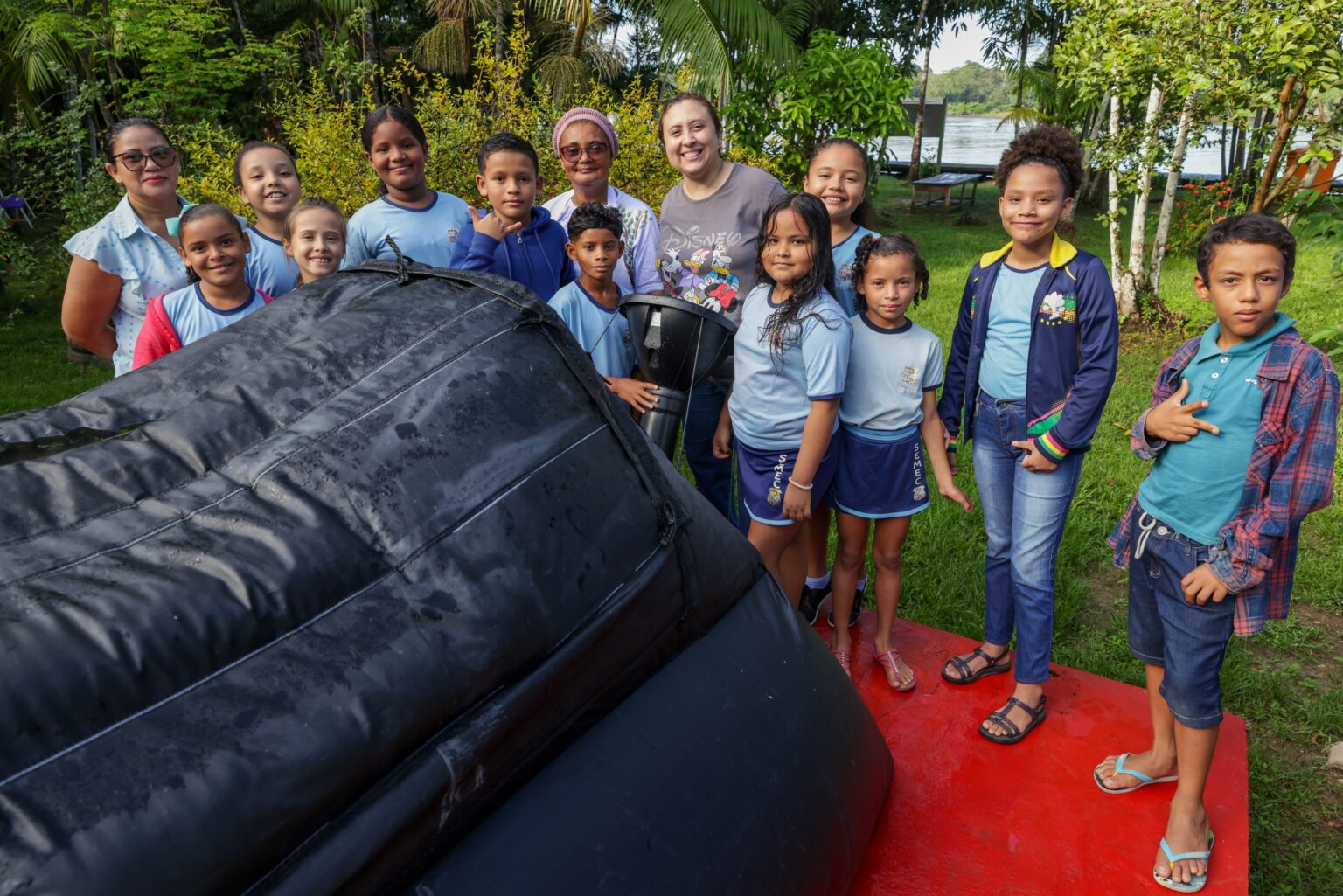
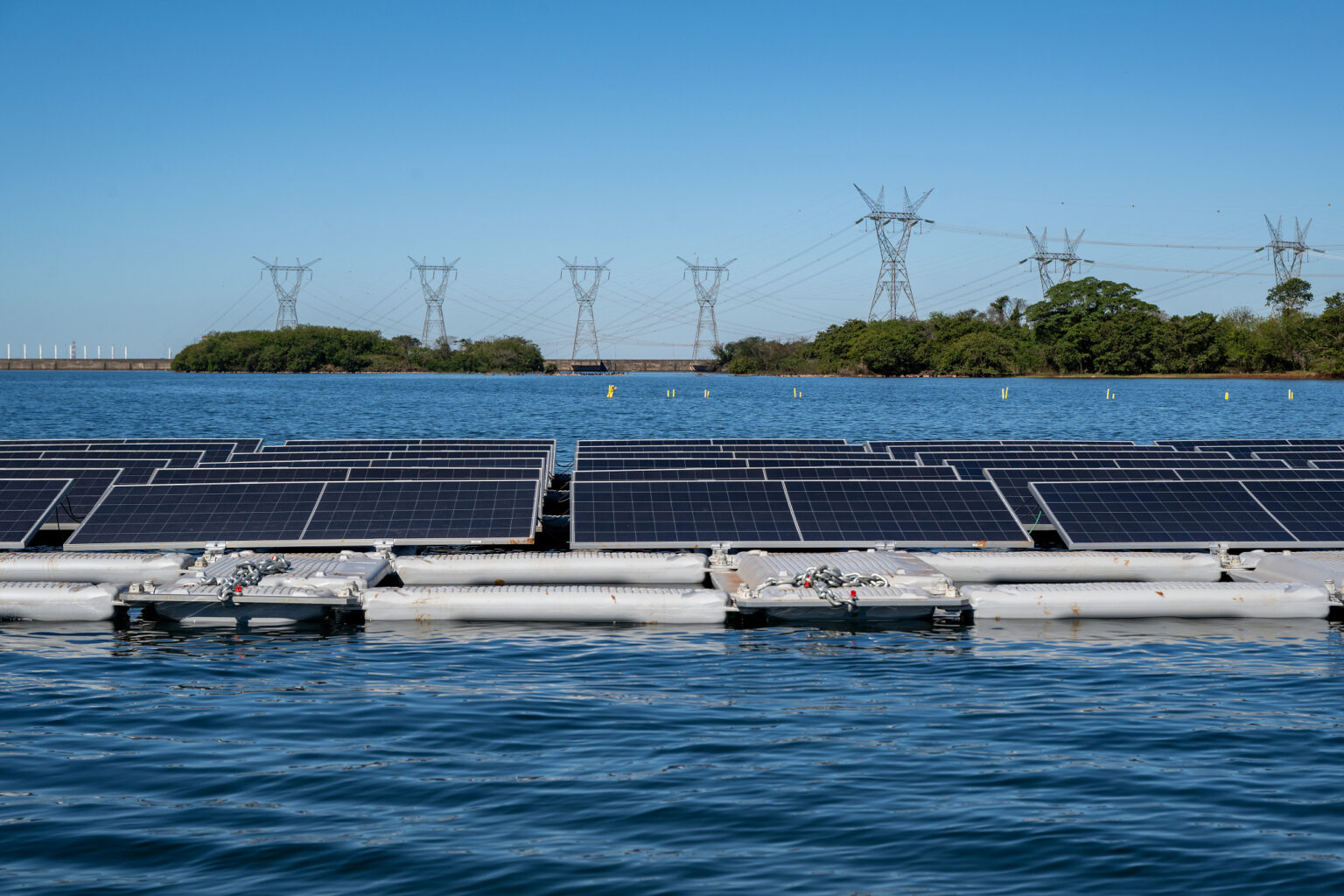
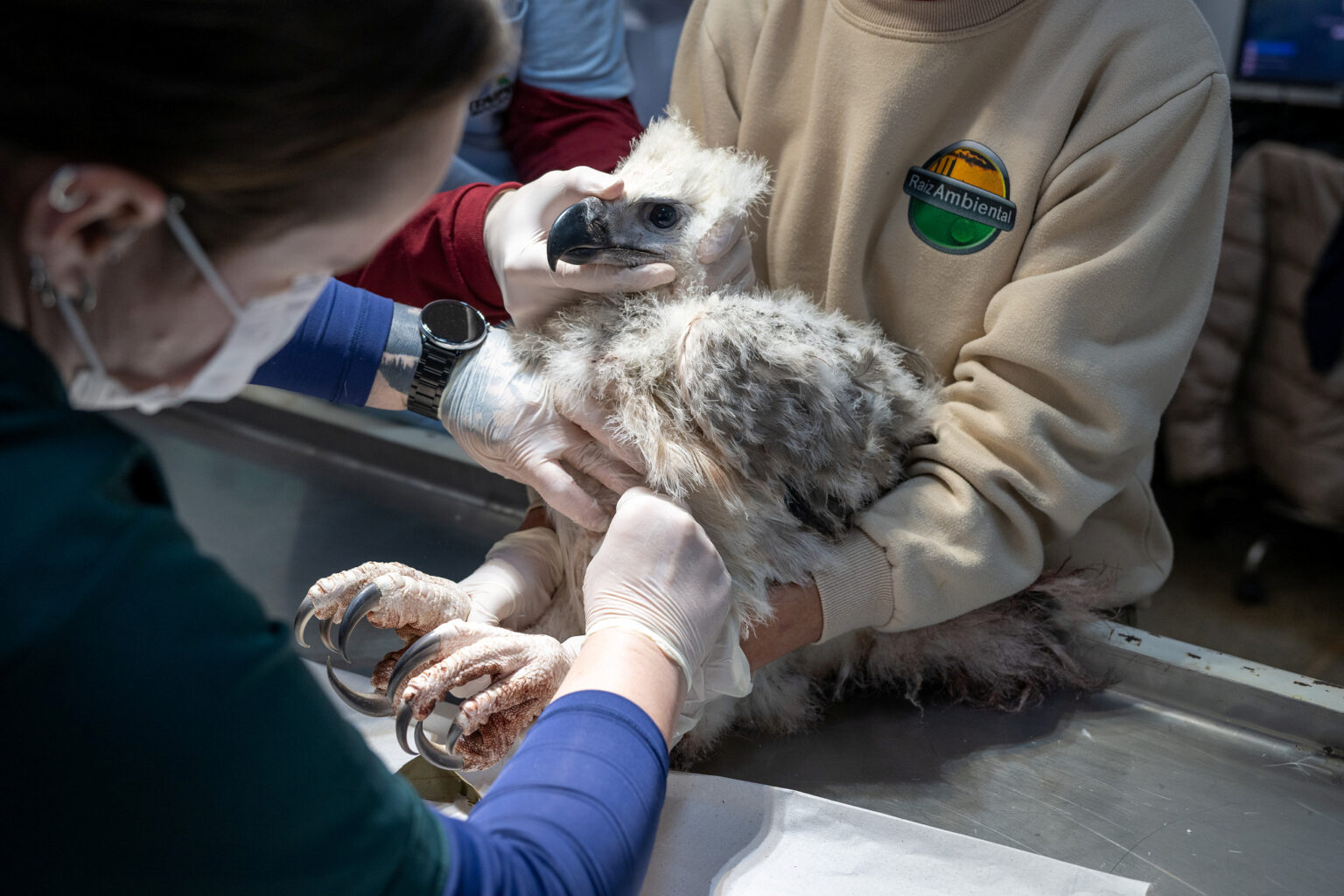





More than just energy, Itaipu is about action.
The Itaipu Binacional hydroelectic power plant is an international benchmark in the generation of clean and renewable energy, as well as in the promotion of sustainable territorial development, with several initiatives that contribute to tackling climate change.
In Brazil, these efforts are part of the Itaipu More than Energy program and are carried out in 434 municipalities across Paraná and Mato Grosso do Sul, as well as in Belém (Pará), the host city of the 30th United Nations Climate Change Conference, COP30.
Program
Check the Itaipu's Agenda at COP30
External
From Private Social Investment to the Value Chain: how the private sector and civil society can contribute to water security, transition, and climate adaptation
with Carlos Carboni (panelist)
- Tuesday, November 11
- 08:30 – 12:00
- Casa Dourada (Rua Doutor Malcher, 15 – Cidade Velha)
Green Zone
Stamp Launch – Itaipu COP30 and Sebastião Salgado
with Enio Verri, Correios and Instituto Terra
- Tuesday, November 11
- 09:00
- Itaipu Stand
Green Zone
Early Warning Systems and Local Action: prevention and adaptation to disasters
- Tuesday, November 11
- 12:30 – 13:30
- Brazil Pavilion - Jandaíra
Green Zone
Transforming Challenges into Solutions: Resilient and Inclusive Cities Facing the Climate Crisis
With Carlos Carboni (Itaipu) and Gisele Ricobom
- Tuesday, November 11
- 17:30 - 18:30
- Brasil Pavilion - Uruçu
External
Sustainable Community Kitchens in Ananindeua
by invitation only
- Wednesday, November 12
- 09:00
- Mãos de Mulheres Kitchen – Curuçambá, Ananindeua (PA)
External
4th International Meeting of Communities Affected by Dams and Climate Crisis, and the Peoples’ Summit
with Carlos Carboni (panelist)
- Friday, November 12
- 10:00
- CESEP School (Av. Pedro Miranda, 100 – Pedreira, Belém/PA)
External
Sustainable Community Kitchens in Ananindeua
with Victoria
- Wednesday, November 12
- 14:00 - 17:00
- Mãos de Mulheres Kitchen – Curuçambá, Ananindeua (PA)
External
Launch of the H₂V Boat
with Enio Verri – By invitation only
- Wednesday, November 12
- 17:30
- Aruna Cultural Space – Combu Island
Green Zone
Leaving No One Behind: Participatory Governance and the 2030 Agenda
with Enio Verri and Suhellen Iurk Preste
- Thursday, November 13
- 10:00 - 11:00
- Brazil Pavilion - Jandaíra
Green Zone
Global Ethical Balance – The 2030 Agenda and the Mission of CNODS. Proposal for the Launch of the National Conference
with Enio Verri (panelist)
- Thursday, November 13
- 13:30
- Creative Economy Pavilion
External
Applications of Biogas in the Brazilian Agroindustry (MCTI)
with Rogério Meneghetti (panelist)
- Thursday, November 13
- 15:00
- Emílio Goeldi Museum
Green Zone
Signing of the Technical Cooperation Agreement between Itaipu and the Ministry of the Environment and Launch of the Environmental Education Campaign
with Carlos Carboni
- Thursday, November 13
- 17:00
- Itaipu Stand
Green Zone
Advancing Sustainable Community Kitchens in Brazil
- Friday, November 14
- 10:00 - 11:00
- Brazil Pavilion – Jandaíra
Blue Zone
Advancing Climate Tech Solutions for the Energy-Water Nexus
with Rogério Meneghetti (panelist)
- Friday, November 14
- 10:30 - 11:30
- SDG Pavilion
Green Zone
My Municipality for the SDGs: Local Action for Climate
with Enio Verri (panelist)
- Friday, November 14
- 11:00 - 12:00
- UN Pavilion
Green Zone
Exhibition of Renewable Synthetic Oil
By invitation only
- Friday, November 14
- 16:30 - 18:00
- Brazil Pavilion
Blue Zone
The Role of Sustainable Hydropower in the Transition to Clean Energy in Latin America
with Rogério Meneghetti (panelist)
- Saturday, November 15
- 09:00 - 10:00
- Global Renewables Hub
Green Zone
Panel 1 – Energy Efficiency as a Starting Point
with Renato Sacramento (panelist)
- Saturday, November 15
- 10:00 - 11:30
- ABDI Stand
Blue Zone
From Potential to Action: Innovative Solutions for Energy Matrices
with Iggor Gomes Rocha (panelist)
- Saturday, November 15
- 11:15 - 12:15
- Brazil Pavilion - Sumaúma
Schedule subject to change.
Videos
Energy Transition
Itaipu is the largest producer of clean and renewable energy in history and invests in research and innovation to drive the energy transition.
Biodiversity
Itaipu’s protected areas preserve more than 100,000 hectares of Atlantic Forest surrounding its reservoir, in both Brazil and Paraguay.
Participatory Governance
Itaipu’s social and environmental initiatives follow a participatory management model involving local communities in Paraná and Mato Grosso do Sul.
Sustainable Development Goals
Itaipu leads numerous initiatives in the states of Paraná and Mato Grosso do Sul that contribute to advancing the goals of the 17 SDGs of the 2030 Agenda.
Infographics
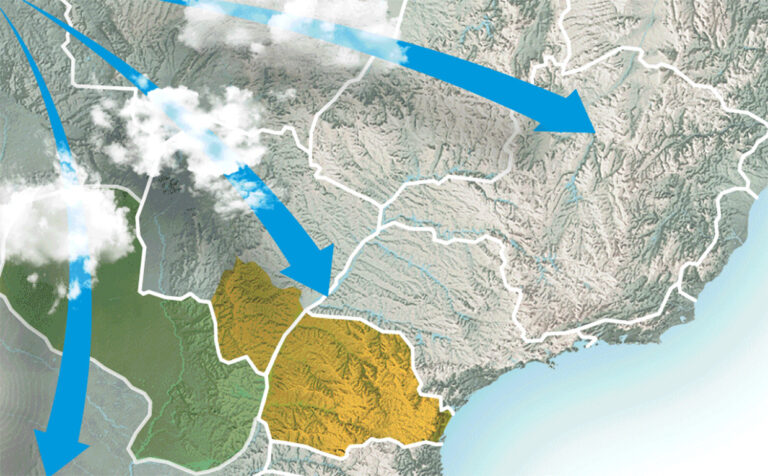
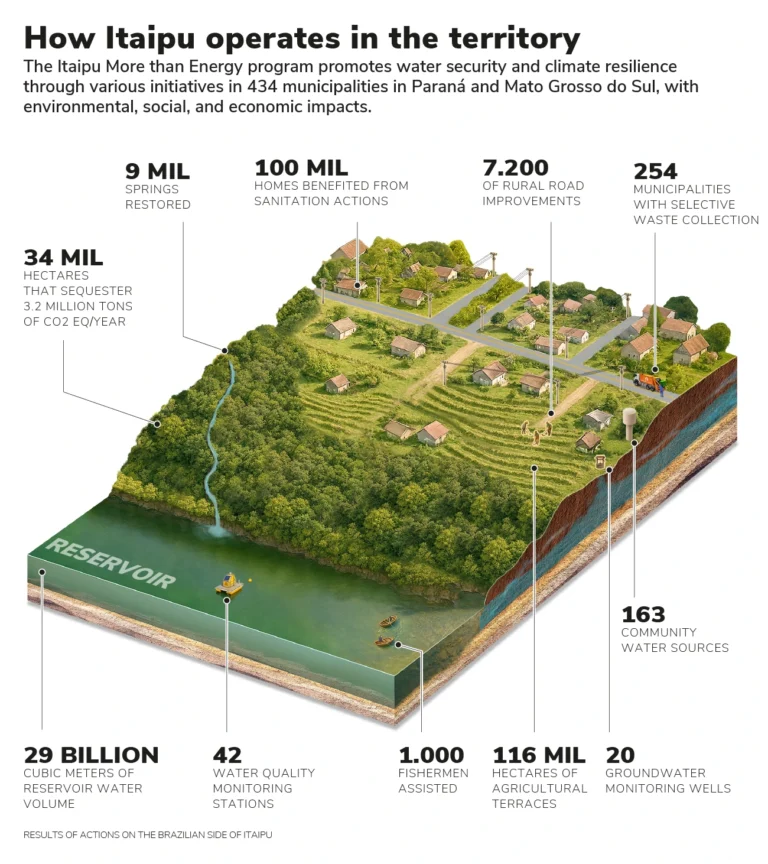
Explore the infographics below to see how Itaipu’s initiatives are interconnected and how they contribute to fostering sustainable territorial development.

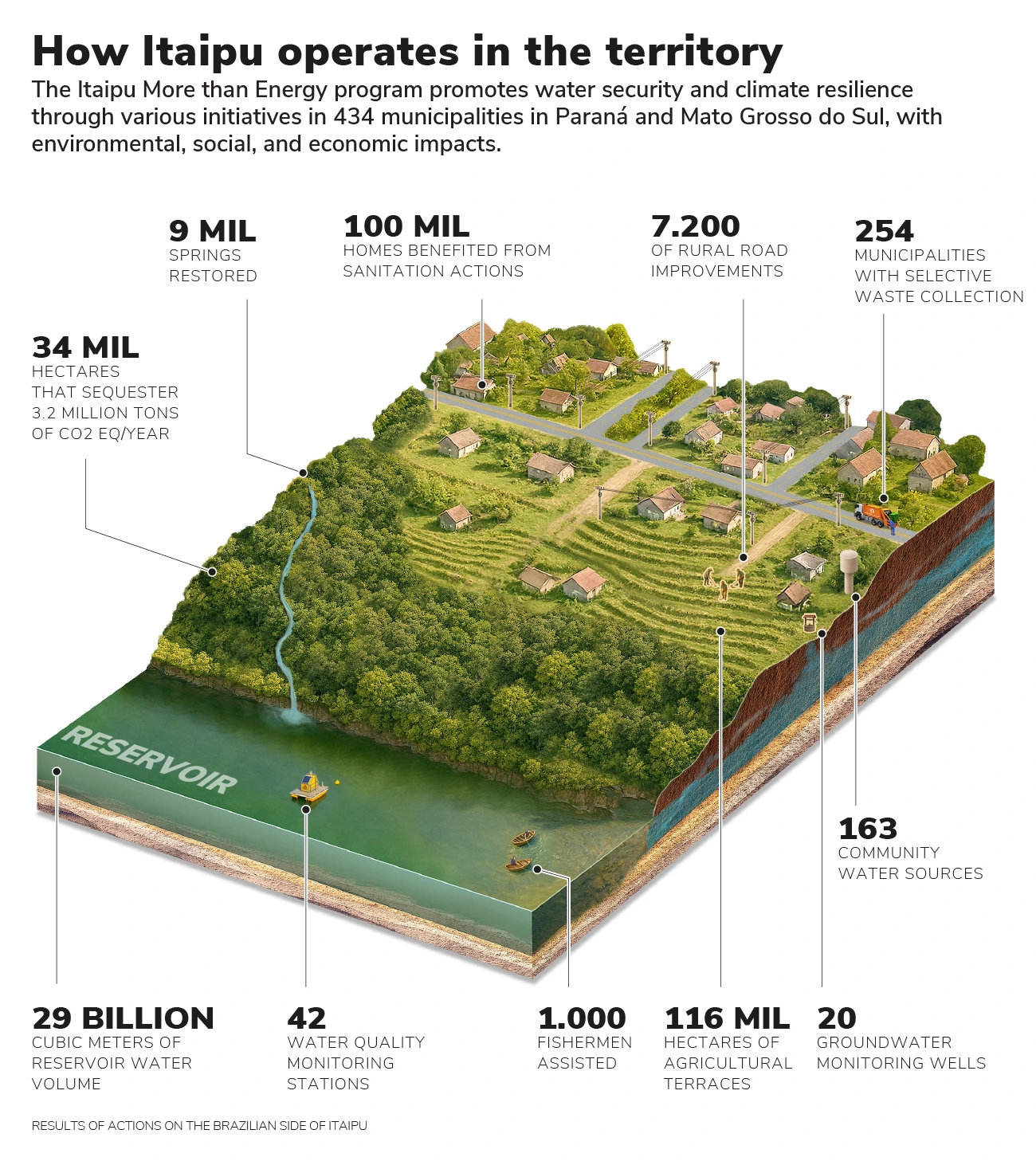
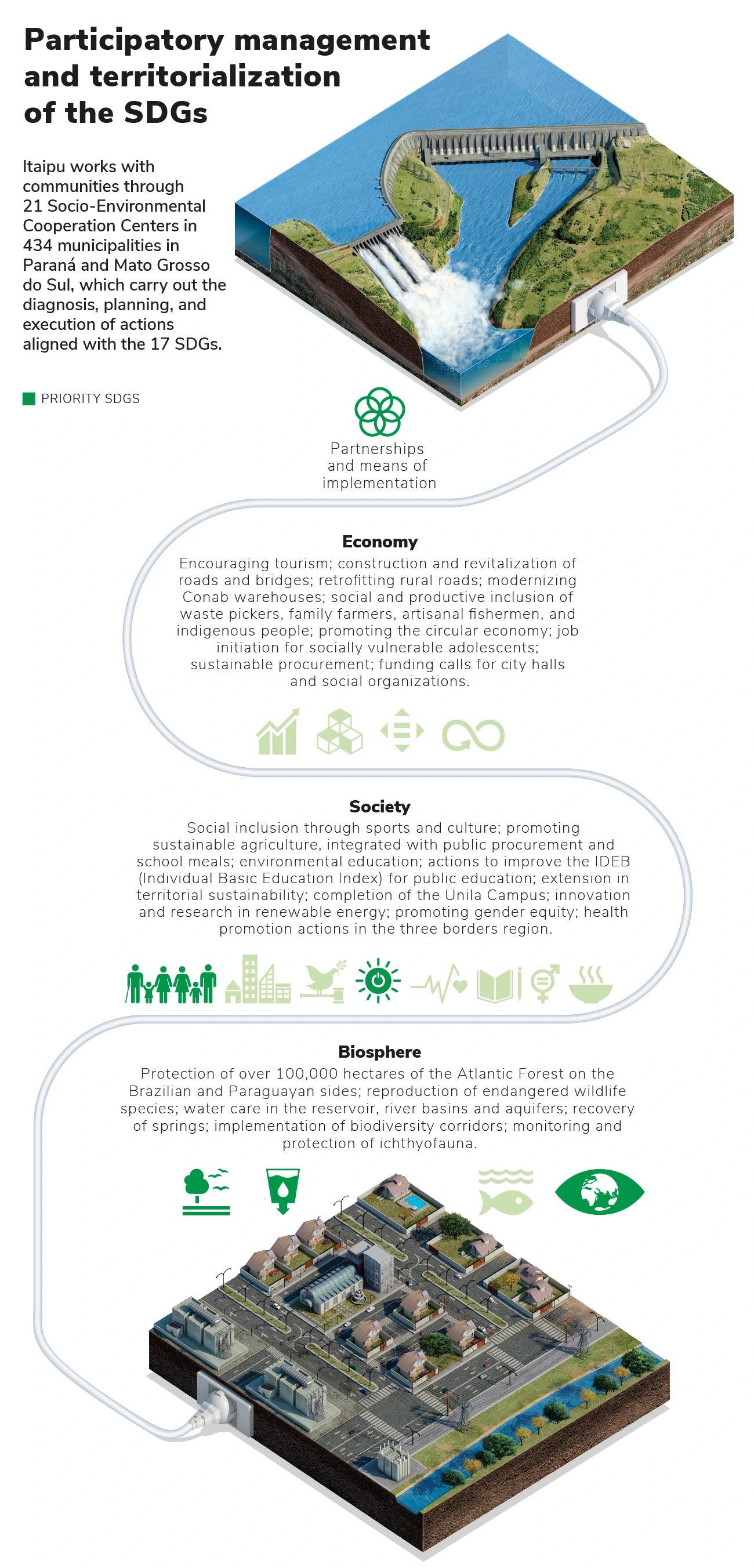



Actions
Check out the company's main actions below, aligned with the COP30's thematic axes
Generation of clean and renewable energy for Brazil and Paraguay
Itaipu Binacional is the largest generator of clean and renewable energy in history, with an aggregate production of over 3 billion megawatt-hours. The plant supplies about 8% of the electricity consumed in Brazil and 80% in Paraguay, contributing to both countries having some of the cleanest energy matrices in the world.
Green hydrogen
This project aims to expand the use of hydrogen to reduce greenhouse gas (GHG) emissions, integrating production, storage, and practical application. It also includes performance studies, technical and economic feasibility assessments, and support for applied research.
Biogas and SAF
Itaipu operates a Demonstration Unit (DU) for Biogas and Biomethane, which uses organic waste and serves as a research hub for Sustainable Aviation Fuel (SAF). Inaugurated in 2017, the Itaipu DU has already processed over 600 tons of waste, producing around 41,000 m³ of biomethane—enough to travel 484,000 km.
Photovoltaic energy
Itaipu supports the expansion of solar photovoltaic generation in its area of influence through public calls and cooperation agreements, enabling universities, municipalities, and philanthropic organizations to invest in this energy source. Municipal projects alone account for an installed capacity of 42 MWp (megawatt-peak), enough to supply a city of 70,000 people.
Floating solar power plant
Currently under development in the Itaipu reservoir, this experimental project involves the installation of floating solar panels with an installed capacity of 1 MWp (megawatt-peak). The aim is to generate clean energy for the plant’s own consumption, develop sustainable technological solutions, optimize reservoir use, and assess environmental and performance impacts.
I-RECs
Itaipu Binacional is implementing a project for the commercialization of Itaipu Renewable Energy Certificates (I-RECs), aimed primarily at companies aligned with ESG practices and that prepare greenhouse gas inventories (GHG Protocol).
Sustainable Transport
Itaipu uses a shared fleet of electric vehicles for daily operations related to corporate activities. Additionally, for employee transportation, the company is implementing a contractual clause that foresees the gradual increase of electric buses.
Hydrogen Fuel Cell
This project, currently under development, is a partnership between Itaipu and Itaipu Parquetec aimed at developing a hydrogen fuel cell energy generation system to replace the current diesel generator used to power Itaipu’s Data Center during power outages.
Protected Areas
Itaipu preserves over 100,000 hectares of Atlantic Forest on both sides of its reservoir, divided among the Protection Strip, Reserves, and Refuges. This natural heritage is part of the core areas of the Atlantic Forest Biosphere Reserve (UNESCO).
Biodiversity Corridors
The restoration and conservation of riparian forests in the reservoir’s connected watersheds have reconnected forest fragments and led to the creation of biodiversity corridors—most notably the Santa Maria Corridor, which links Iguassu National Park to Itaipu’s protected areas.
Seedling Production
Itaipu promotes the production of native tree seedlings at a nursery located in the Bela Vista Biological Refuge. This initiative benefits farmers from rural communities, students from municipal and state schools, and local governments in Paraná and Mato Grosso do Sul.
Wildlife Care
Itaipu carries out several actions for wildlife conservation, including maintaining a hospital for wild animals, breeding endangered species in captivity, and establishing technical partnerships with environmental agencies, conservation units, and research institutions—including international ones.
Fish Fauna Conservation
Actions include research and monitoring; support for artisanal fisher organizations; promotion of aquaculture, including technical assistance; and the implementation of the Migratory Channel, which allows migratory fish in the Paraná River to bypass the dam.
Monitoring of Aquatic Plants
Itaipu maintains a database on aquatic plants dating back to 1996, which supports the monitoring of these species. In addition, the company uses cutting-edge technologies—such as hydroacoustic monitoring (based on sound propagation in water)—to track plant growth, which, if uncontrolled, can interfere with the multiple uses of the reservoir.
Water Quality Monitoring
The company has maintained data since 1979 on the water quality of the reservoir and its main tributaries, including the bathing conditions of the beaches. This monitoring is a key tool for decision-making in watershed management.
Micropollutant Monitoring
The goal is to create conditions for water resource management in relation to the presence of micropollutants. The initiative includes monitoring and techniques for diagnosing and removing these pollutants from natural waters, soil, and sediments in the border region between Brazil and Paraguay.
Reservoir Carbon Balance
In partnership with Itaipu Parquetec, this initiative investigates the dynamics related to carbon emissions and sequestration, and their connections with biodiversity in the reservoir area. The objective is to develop estimation methods for greenhouse gas emissions from water bodies.
Technical Assistance and Rural Extension (Ater)
In its area of operation in Paraná and Mato Grosso do Sul, Itaipu has established a network of Technical Assistance and Rural Extension (Ater) that serves more than 7,000 farming families through two partnerships: Semeando Gestão (with Itaipu Parquetec and the Agrarian Reform Central Cooperative – CCA-PR), and Caminhos Sustentáveis (with UNDP).
Integrated Soil and Water Action (AISA)
In partnership with Embrapa, IDR-Paraná, USP/Esalq, and Faped, this initiative includes 17 research and technology transfer projects focused on plant and animal production systems. The results demonstrate how practices such as crop rotation, no-till farming, and forest preservation contribute to “water production” and climate resilience.
Hydrosphere Project
This initiative, in partnership with Itaipu Parquetec and the Federal University of Paraná (UFPR), monitors the quality and interactions between groundwater and surface water. The project produced an atlas with data to support strategic decision-making in water resource management.
Agroecological Production
Itaipu supports agroecological production through several initiatives, including the Vitórias project (focused on technology transfer, in partnership with IDR Paraná and Fapeagro); research on organic farming systems (with Unioeste); cultivation of medicinal plants; and training and income generation in the organic value chain (in partnership with the Cooperative of Organic and Agroecological Farmers).
Open Innovation for Startups
In partnership with Itaipu Parquetec, this initiative aims to connect agribusinesses, farms, and cooperatives to cutting-edge technologies—fostering sustainability, efficiency, and inclusion in rural areas. Focus areas include: waste and effluents, energy efficiency, traceability and logistics, and inclusive innovations.
Pesticide Monitoring
In partnership with Unioeste, Itaipu investigates human and terrestrial wildlife contamination by pesticides in the southwestern and western regions of Paraná. The aim is to assess the level of contamination in populations exposed to pesticides and to provide data to help identify risks to terrestrial fauna. The initiative includes awareness-raising activities, promotion of sustainable production practices, public health policy support, and the establishment of an analysis center.
Aquaculture and Fishing
Itaipu leads several initiatives aimed at the sustainable production of fish in the reservoir region, including: research on fish fauna; support for associations representing around 1,000 fishers in Paraná and Mato Grosso do Sul; and the development of techniques for fish farming using net-cage and biofloc systems.
Recycling Program
The Coleta Mais recycling program, in partnership with Itaipu Parquetec, operates in 255 Brazilian municipalities (in Paraná, Mato Grosso do Sul, and in Belém), implementing structured recycling systems and supporting the work of over 4,000 waste pickers. A key feature of the program is the use of the Reciclômetro, a tool that tracks various social and economic indicators related to the recycling process. In Belém, the program includes a hydrogen-powered boat, specially developed for the initiative.
Organic Waste
In Santa Terezinha de Itaipu, Itaipu operates a reference unit for organic waste valorization (UVRO). The objective is to support the separation, collection, and bio-stabilization of organic waste through a composting facility, in partnership with the local Association of Environmental Agents.
Water Supply for Indigenous Communities
This project aims to expand and improve water supply systems in Indigenous villages in Mato Grosso do Sul. It directly supports approximately 35,000 Guarani people across 18 villages. An additional 41,000 Kaiowá Indigenous people will benefit indirectly through the development of basic and executive water supply system projects.
Sanitation
Through an agreement with Sanepar and Itaipu Parquetec, Itaipu is implementing infrastructure for the collection and treatment of domestic sewage. The initiative benefits around 100,000 residents in western Paraná.
Infrastructure Works in Belém
Itaipu supports the organization of COP30 in Belém through several initiatives that will leave a lasting legacy for the local population. Highlights include the Nova Doca Park and São Joaquim Park, featuring micro and macro-drainage systems and wastewater treatment, along with the paving of several urban streets and the creation of a Bioeconomy Innovation District, among other projects.
Reservoir Care
Itaipu carries out several initiatives to ensure the quality and quantity of water in the reservoir, which, in addition to generating energy, is used for municipal water supply and other purposes. These initiatives include a comprehensive database on the reservoir’s physical-chemical water quality and hydrodynamic modeling of the reservoir.
Revitalization of Avenida JK in Foz do Iguaçu
This project addressed a long-standing demand from the local community by solving flooding issues on the avenue Avenida JK (JK Avenue) during heavy rains. It also created new public spaces, benefiting more than 285,000 people.
Housing Project
This program provides housing access for 760 socially vulnerable individuals in Foz do Iguaçu. It includes the construction of 254 homes using a sustainable construction method (wood frame). The families previously lived in Vila Brás, an area along a river that was frequently affected by flooding. The project also includes environmental restoration of the area formerly occupied by the families.
More Engineering Program
The goal is to foster the training of civil engineering professionals and the implementation of projects that promote sustainability and socio-environmental development in Paraná’s municipalities with the lowest HDI, totaling a population of 452,000.
My House, My Life
This is a financial contribution from Itaipu to the Residential Leasing Fund (FAR), aiming to assist with housing services for families in situations of social vulnerability, promoting the right to the city and to housing in decent conditions.
Extension Program in the 2030 Agenda
The program promotes territorial sustainability actions aligned with the 17 SDGs through scholarships, equipment and supplies, and extension projects for public higher education institutions in Paraná and southern Mato Grosso do Sul, contributing to innovation and scientific and technological development. The initiative benefits 1,000 scholarship holders from 17 universities.
Participatory Governance
This initiative by Itaipu, supported by Itaipu Parquetec, aims to establish a network of Socio-Environmental Cooperation Centers as part of the strategy to promote sustainable territorial development within the Itaipu More Than Energy Program, aligned with federal government public policies.
Ecological Line
This agreement between Itaipu and the municipalities bordering the reservoir seeks to develop educational and cultural actions to disseminate environmental education concepts and practices for sustainability, promoting water security and cultural development of the territory.
Itaipu’s Educational Structures
Itaipu promotes integrated environmental education actions aimed at raising awareness and sensitizing the community at the Ecomuseum and the Bela Vista Biological Refuge. This awareness is fostered through activities that encourage interest in technology, science, and sustainability, contributing to territorial development with a focus on water security.
Environmental Education in Belém
The goal is to promote training processes, capacity building, and the acquisition and production of materials on waste management topics, strengthening the adoption of sustainable habits to reduce greenhouse gas emissions and improve people’s quality of life, as well as defining an operational plan for fostering the local entrepreneurial ecosystem.
“Nota 10” School Feeding
The project promotes a training process in Food and Nutritional Security for cafeteria workers and nutritionists under the National School Feeding Program (PNAE). The agreement includes organizing regional seminars, an online course, publication of materials, and holding a national healthy recipe contest, among other activities.
Higher IDEB Scores in Municipalities
This initiative aims to improve the learning process in the municipal public school system through the provision of support materials and training for education professionals. The project involves both students and teachers and is already established in 56 municipalities in Paraná. In addition to distributing teaching material kits, the project includes forums and training activities for around 8,000 teachers.
Bem Viver Project
The goal is to develop actions in education, communication, restoration, and environmental recovery to promote the production of healthy organic food, income generation, health promotion, and gender equity in agrarian reform areas in the state of Paraná.
Indigenous Communities
Itaipu supports the Ocoy, Itamarã, and Añetete communities with actions to improve quality of life and sustainability. Additionally, it promotes the Opaná: Indigenous Land project, which fosters agroecological food security, water access, and anti-racist education in indigenous communities in Paraná. Approximately 970 families benefit from this initiative.
Soil Laboratory
Funded by Itaipu, the State University of Mato Grosso do Sul established the Soil Laboratory, which enabled the launch of the Agronomy course as well as a Master’s Program in Environmental Sciences. The laboratory serves as a base for teaching and research and provides soil analysis services to farmers in the region.
Work Initiation and Encouragement Program
Since 1988, this program has served over 7,000 low-income and at-risk adolescents. Its goal is to guarantee the right to professional training, providing practical experience in corporate environments, civic education, and the development of socio-emotional skills based on UNESCO’s pillars and UNICEF’s Life Skills framework.
Social Inclusion
Itaipu develops various initiatives focused on education, health, and social and economic inclusion through sports and cultural activities, as well as actions promoting human dignity and gender and racial equity.
Public Calls
Itaipu invests in socio-environmental projects within its area of operation through the publication of public calls. The first call, in 2023, made R$ 931 million available for 430 municipalities in Paraná and Mato Grosso do Sul to invest in environmental sanitation; water and soil management; photovoltaic panels; and social infrastructure. In 2024, a new call of R$ 400 million enabled social organizations to access funds for their initiatives.
Watershed Management
These agreements correspond to partnerships with municipalities in the incremental watershed of the Itaipu reservoir for implementing activities related to environmental sanitation, soil conservation, rural road infrastructure, and renewable energy. This initiative began in 2004 and currently covers 15 municipalities in Mato Grosso do Sul and 88 municipalities in Paraná, benefiting approximately 1.8 million people.
Scholarships for Studies on the 2030 Agenda
This funding line, developed in partnership with Itaipu Parquetec, supports the development of R&D&I projects and applied products on topics such as water, climate, territory, biodiversity, and sanitation, focusing on water security and sustainable regional development.
Itaipu Sustainability School
This project aims to systematize Itaipu’s sustainability-related information using educational methodologies and disseminate the knowledge and expertise of the company and Itaipu Parquetec. Targeted at the general community, it includes online courses, seminars, webinars, and educational publications on social media.
Completion of Phase I of the UNILA Campus
Subject to an agreement between Itaipu, UNILA, and UNOPS, this initiative seeks to complete Phase 1 of the UNILA campus construction in Foz do Iguaçu, including the Central Building, Utilities Center, Restaurant, Classrooms, and the minimum necessary urbanization works, benefiting the UNILA academic community of around 5,000 people. The investment is R$ 752 million.
Modernization of CONAB Warehouses
This agreement with CONAB and UNOPS aims to promote improvements in the Storage Units of Ponta Grossa/PR, Cambé/PR, Rolândia/PR, and Maracaju/MS, identified as priorities by CONAB. The renovation will contribute to maintaining CONAB programs for social supply, family farming, and Minimum Price Guarantee Policies. With an investment of R$ 55 million, this initiative benefits an estimated population of 537,000 people in the involved cities.
Open Technologies and Internet of Things Center
In partnership with Itaipu Parquetec, Itaipu maintains a Technology Center focused on Research, Development, and Innovation (R&D&I) in areas such as Internet of Things (IoT), Data Analytics, Artificial Intelligence, Application Development, and IT solutions. Among the results are 97 research projects, more than 500 trained students, and 109 scholarships offered, including for master’s and doctoral studies.
Itaipu's actions in Belém
Itaipu Binacional’s support for COP30 is part of its commitment to the global sustainability agenda and reinforces the connection between forest conservation and water security in the hydroelectric sector, demonstrating that caring for the environment and the region’s communities means caring for the future of energy generation.
Belém - Pará
São Joaquim Park
This initiative, in partnership with the Belém City Hall, aims to environmentally rehabilitate the São Joaquim stream, the largest watercourse in the Una Basin and a fundamental element of the city’s macro-drainage system. It includes urban planning, landscaping, macro- and micro-drainage, sewage, water supply, electrical installations, waste management, public lighting, paving, road signs, and visual communication. Itaipu is investing approximately R$150 million, and the city hall is investing R$23 million.
Belém - Pará
Paving of roads and urban streets
Under an agreement with the Pará State Government, this initiative aims to improve the capacity of urban roads, especially arterial roads, which are essential for population mobility. They will also play a strategic role as access routes during the COP30 event and will remain a legacy for the people of Belém. There are approximately 320 roads, totaling 100 km. The investment is approximately R$150 million.
Belém - Pará
Belém Bioeconomy Innovation District (DIBB)
This agreement with the Belém City Hall, the Foundation for Research Support and Development (Fadep), and Itaipu Parquetec involves the renovation of a historic building in downtown Belém, with an investment of R$4.7 million. Another R$2 million is being invested in equipment. The project aims to foster startups focused on promoting the Amazonian bioeconomy. The renovation is complemented by mentoring, training, and the development of a communication and marketing plan for the DIBB. It also includes the launch of calls for proposals to promote companies in the bioeconomy. Learn more: DIBB – Belém Innovation and Bioeconomy District
Belém - Pará
Solid waste management
Through a partnership with the Municipal Government, Fadesp, and Itaipu Parquetec, Itaipu Binacional is bringing to Belém the successful experience of the Coleta Mais recycling program, which already operates in 254 municipalities in Paraná and Mato Grosso do Sul. The program aims to improve the physical infrastructure of waste picker associations (which are renamed as Recycling Valorization Units – UVRs), in addition to providing new equipment, uniforms, and personal protective equipment (PPE). The program also includes the donation of a hydrogen-powered boat (to assist with collection on the islands) and the hiring of technicians for each location, who help with the administrative and financial organization of the associations, input of data into the Reciclômetro (Recyclometer), and enhancement of material sales. The initiative values the work of waste pickers, who benefit from better working conditions and income. In Belém, the initiative supports 89 waste pickers from four local cooperatives: Concaves, Filhos do Sol, Aral, and ACCSB.
Belém - Pará
Environmental Education
In addition to the preparatory works for COP30, Itaipu is promoting a series of Environmental Education (EE) actions in partnership with UFPA-Fadesp. This initiative includes the acquisition of 36 biodigesters for municipal schools and four Recycling Valorization Units (UVRs); the organization of three education seminars for teachers; 68 theatrical presentations for schools and communities on conscious consumption and selective collection; 60 workshops on various topics; production of a booklet on selective collection; seed pencils and fridge magnets for the selective collection calendar of the served neighborhoods. The actions planned within DIBB, Solid Waste Management, and Environmental Education total investments of R$ 41 million.
Belém - Pará
Implementation of Nova Doca Park (Belém-PA)
The park, approximately 1,200 meters long, is part of an agreement with the Pará State Government aimed at improving mobility conditions on Visconde de Souza Franco Avenue, as well as creating spaces for socializing, leisure, and sports practice, alongside macro and micro drainage works. The initiative is based on public use of the space and the restoration of the site’s memory, with reference to the original ecosystem. It includes the installation of approximately 19,000 meters of sewer network, with the construction of 365 inspection wells and 2,300 household connections, as well as a pumping station and a shelter for a power generator. The investment is R$ 316 million.
Belém - Pará
Restoration of São Brás Market
In partnership with the Belém City Hall, the project restored the market to recover its original architectural features, given its historical and cultural significance for the city of Belém. Inaugurated in 1911, the market represents the rubber boom era and Art Nouveau architecture, and today it is a hub for promoting Pará’s cuisine and culture. Besides generating income for small producers and merchants, it also attracts tourists seeking an authentic Amazonian experience. Its strategic location makes it a central piece in urban revitalization and mobility projects, especially in the context of COP30. The investment amounts to approximately R$ 89 million.
Belém - Pará
Ver-o-Peso Complex
This partnership with the Belém City Hall includes the renovation and revitalization of the Ver-o-Peso Market and the Açaí Fair, as well as the renovation of the docks and dredging of the Guamá River near the market area. At the Meat Market, works include painting, floor revitalization, electrical and plumbing installations, and restoration of the wooden roof structures, along with the replacement of damaged tiles. The Fish Market renovation focuses on conservation, maintenance, installation updates, facade painting, roof tile replacement and cleaning, internal floor replacement, and installation of stainless steel counters. The investment is approximately R$ 60 million.
Belém - Pará
Vila Líderes Hotel Complex
In partnership with the Pará State Government, this project involves constructing a hotel complex with nearly 20,000 m² of built area, comprising five blocks totaling 405 suites, plus a central service block. After COP30 concludes, the complex is expected to be transformed into an Administrative Center for the Pará State Government. The investment amounts to R$ 224 million.
Belém - Pará
Renovation and Expansion of the Outeiro Port Terminal
The renovation and expansion aim to accommodate cruise ship operations during COP30 and establish the terminal as a strategic asset for maritime tourism and regional logistics. The planned interventions seek to transform the terminal into a reference infrastructure, capable of permanently accommodating large vessels. After the event, the terminal will contribute to strengthening Belém as a strategic destination on the international cruise route, increasing its global visibility and promoting sustainable growth in tourism and the local economy. The investment is R$ 233 million.
Combating climate misinformation
Climate misinformation is a central theme at COP30. Itaipu Binacional seeks to contribute to this issue by promoting scientific information and sharing ways to identify the main misinformation strategies.
Itaipu's Actions
Climate Change Course
A Itaipu makes its vast experience in sustainability available to the general public through courses offered by the Itaipu Sustainability School (EIS). Among these is the Climate Change course, offered in a distance-learning, asynchronous, self-paced format, with a total workload of 40 hours. In addition to the course, EIS publishes various educational content on social media, including the Sustainable Dialogues podcast.
Lectures on the Climate Emergency
Through its Socio-Environmental Cooperation Centers, Itaipu promotes a number of environmental education initiatives. Among them, it held several lectures with scientific influencer Átila Lamarino on the climate emergency throughout the first half of 2025. In total, 21 seminars were held in the 21 host cities of the Centers in Paraná and Mato Grosso do Sul, with the participation of over 6,000 people.
Webinar and Social Media Content
This initiative by Itaipu’s Social Communication Office is a partnership with journalist Iberê Thenório, creator of Manual do Mundo, one of Brazil’s leading YouTube channels focused on education and science. The partnership includes a webinar held on October 23, 2025, and the production of content addressing climate change and climate misinformation.
Talks on Climate Misinformation
In August 2025, the Centers launched a new initiative, this time aimed at young people and focused on Training in Media Literacy and Climate Disinformation. The goal is to train more than 600 young people through six-hour in-person meetings, as well as two two-hour virtual meetings, totaling 10 hours of training.
Questions and answers
Itaipu Binational is an example of how science can be used to promote human development. It is no exaggeration to say that without cutting-edge research and scientific knowledge, there would be no Itaipu electricity powering the homes of Brazilians and Paraguayans.
There is an immense amount of scientific knowledge required to operate the plant, ranging from civil, electrical, and mechanical engineering to environmental expertise applied in the care of the reservoir, protected areas, and surrounding territory.
Climate science is also essential to understanding the relationships between the climate and the waters of the Paraná River, the raw material for energy generation at Itaipu. For this reason, climate change is a subject Itaipu follows with great interest.
Mitigating impacts and promoting resilience and adaptation to climate change are issues directly linked to Itaipu’s business. They are part of the company’s strategy in caring for water, the territory, and people.
In this context, the company is also committed to combating climate misinformation. Today, more than 97% of climate scientists agree that human activity, especially fossil fuels, is altering the Earth’s climate.
However, this consensus is not reflected in society at large. Economic, political, and ideological interests often overshadow scientific knowledge and resort to spreading false information to cast doubt on climate science.
The lack of awareness about the urgency of this issue has delayed action. As a result, many impacts of climate change are already irreversible and have been affecting the lives of millions worldwide, as well as causing species extinction, ecosystem collapse, and economic losses.
For all these reasons, climate misinformation is a central theme at this 30th COP. Itaipu seeks to contribute to this issue by disseminating scientific information and providing tools to identify the main strategies of climate misinformation.
Climate change impacts the economic activity of Itaipu Binacional: the generation of clean and renewable energy for Brazil and Paraguay. To sustain this activity in the long term, the company develops social and environmental actions that contribute to the sustainability of communities, economic activities, and ecosystems connected to the plant.
These actions also contribute to the mitigation of and adaptation to climate change within the company’s area of operation. For this reason, they are shared at climate conferences with other governments and organizations, aiming to support Brazil’s strategy of leadership in climate action and the sustainable development agenda.
As part of this commitment, Itaipu supports the hosting of COP30 in Belém not only by sharing best practices and participating in discussions but also through investments totaling R$ 1.3 billion, enabling structural improvements that benefit around 1.3 million people in 37 neighborhoods, including 89 families of waste pickers, providing better working and income conditions. These actions strengthen the social legacy of the conference.
Itaipu’s involvement in COP30 reinforces the connection between the conservation of the Amazon Forest and the water security of the national hydropower sector, demonstrating that caring for the environment and local communities is also caring for the future of energy generation.
Hydropower has historically been the main source of electric energy in Brazil, accounting for 60% of the electricity consumed in the country in 2023, according to the 2024 National Energy Balance.
Hydropower generation is strongly influenced by the natural variation of the hydrological regime, and thus periods of drought or rainfall directly affect the generation of power plants.
The increase in the global average temperature results in impacts on atmospheric circulation systems and the hydrological cycle, consequently affecting precipitation. Changes in precipitation patterns, whether in quantity or in their seasonal and geographic distribution, can affect water availability for hydropower plants, harming reservoir management and electricity production.
Although influenced by precipitation variability, energy generation depends on the inflow rates to hydropower plants, which are related not only to rainfall behavior but also to a series of other factors such as the capacity to regulate flows through reservoirs, water uses within the watershed, evapotranspiration, and other aspects that influence water runoff, such as vegetation cover and soil type.
The atmosphere has a natural greenhouse effect: part of the sun’s rays that reach the Earth are “trapped” in this layer of gases surrounding the planet, which helps create the conditions necessary for life as we know it. However, since the Industrial Revolution, the burning of fossil fuels has produced gases that increase this greenhouse effect and, consequently, the planet’s average temperature. It’s as if we are making the “blanket” that surrounds the planet increasingly thicker.
Climate science shows a clear and direct relationship between the growth of emissions and temperature. With more energy in the atmosphere, the intensity and frequency of extreme weather events increase, such as cold and heat waves, storms, droughts, and floods. Higher temperatures also contribute to the melting of the poles and glaciers, which leads to rising sea levels.
The burning of fuels in transportation or coal for generating energy and heating homes are examples of how fossil energy contributes to greenhouse gas emissions. However, another climate villain is deforestation of forests and woodlands, which also releases carbon dioxide and reduces the number of trees and plants. These, in turn, play an important role in the climate by sequestering (removing) carbon from the atmosphere.
Source: un.org
The world’s average temperature is rising faster than at any time in history, causing changes in Earth’s weather patterns. This change has no single cause, but what science is certain of is that human activity is strongly involved.
Among the main causes are:
- Energy generation through the burning of fossil fuels (coal, oil, or gas), whether to produce electricity, for transportation (road, maritime, or air), or to heat/cool homes and buildings;
- The manufacturing of products such as cement, iron, steel, electronics, plastic, among others, which release greenhouse gases;
- Deforestation for the creation of farms or pastures, urban expansion, logging, or other reasons (trees absorb carbon dioxide, and their destruction limits nature’s capacity to absorb greenhouse gas emissions);
- Food production using unsustainable techniques, since, besides deforestation for expanding agriculture and livestock, tilling (or leaving the agricultural soil exposed) releases organic matter that generates greenhouse gases; additionally, livestock flatulence and waste from cattle, pigs, and other animals are strong producers of methane gas, one of the most aggressive greenhouse gases;
- Excessive consumption also contributes to climate change: the richest 1% of the global population accounts for more greenhouse gas emissions than the poorest 50%.
Source: un.org
In 2024, Brazil was one of the hottest places on the globe, recording its warmest year in history. According to data from the National Institute of Meteorology (Inmet), the average temperature in the country was 25.02 °C, the highest since 1961, when this type of data began to be recorded. But how is the planet’s average temperature calculated?
According to the World Meteorological Organization (WMO), this figure was calculated based on the analysis and consolidation of values obtained by six independent climate services. Three are from U.S. institutions: the space agency (NASA), the National Oceanic and Atmospheric Administration (NOAA), and the non-governmental organization Berkeley Earth. The other three are Copernicus from the European Union, the Met Office from the United Kingdom, and the Japan Meteorological Agency.
Local temperature measurement is done in various ways. On land, thermometers mounted at tens of thousands of weather stations provide precise air temperature readings. Ships and floating buoys in the ocean capture surface sea temperatures. The calculation of the global average temperature takes all these data collected on land and ocean surfaces into account. Historical data series show a rising trend, with the year 2024 being considered the hottest on record.
Carbon dioxide (CO2), methane (CH4), and nitrous oxide (N2O) are the main greenhouse gases (GHGs). CO2 is produced, for example, by the burning of fossil fuels or by wildfires. Methane, in turn, results from the decomposition of organic matter (such as livestock waste). Nitrous oxide can be produced by the use of fertilizers.
Based on a study spanning 20 years, methane is 80 times more potent than CO2 as a driver of climate change, and in relation to nitrous oxide, this proportion is 280 times.
Unlike other countries, where the energy sector is the main emitter of greenhouse gases, in Brazil, these emissions are mainly due to Land Use Change and Land Use, which includes deforestation. Learn more about Brazil’s emissions in the 6th edition of the Annual Estimates of Greenhouse Gas Emissions — Ministry of Science, Technology and Innovation
Source: unep.org
Around the world, changes are being observed in the atmosphere, oceans, and continents caused by human activity. These changes have led to losses and damages to nature and people. Vulnerable communities worldwide, which have contributed least to greenhouse gas emissions, are among the most impacted by climate change.
According to the latest IPCC report, it is unequivocal that human activity has warmed the planet. As consequences, there is the rise in sea levels and increased frequency and intensity of heatwaves, droughts, storms, and tropical cyclones.
Approximately 3.6 billion people worldwide live in contexts that are highly vulnerable to climate change. The vulnerability of humans and ecosystems is deeply interconnected. The intensification of climate change has led to food insecurity and reduced access to water, as well as loss of human lives and economic damage from climate disasters.
Many of the losses caused by climate change are already considered irreversible, especially in ecosystems where biodiversity loss is proven, with extinction of fauna and flora species. In urban areas, impacts on health, housing, and infrastructure—including transportation, sanitation, and energy systems—are well documented.
Source: Synthesis Report for the Sixth Assessment Report (IPCC) ippc.ch
The Intergovernmental Panel on Climate Change (IPCC) was established by the United Nations Environment Programme (UNEP) and the World Meteorological Organization (WMO) in 1988, with the objective of providing policymakers with regular scientific assessments on climate change, its impacts, and potential future risks, as well as proposing adaptation and mitigation options.
Currently, the IPCC has 195 member countries, including Brazil, and compiles findings from research conducted by thousands of scientists worldwide. Through its assessments, the IPCC determines the state of knowledge on climate change, identifies scientific consensus, and highlights areas where further research is needed. These assessments provide essential inputs for international negotiations aimed at addressing climate change.
The IPCC Assessment Reports consist of contributions from three Working Groups and a Synthesis Report that integrates these contributions and any special reports prepared during the same assessment cycle. The IPCC Special Reports address specific issues agreed upon by member countries, and the Methodology Reports provide practical guidelines for preparing greenhouse gas inventories.
Source: ippc.ch
Addressing climate change involves mitigation strategies (focused on reducing greenhouse gas emissions) and adaptation strategies (aimed at building resilience to its impacts). The actions and commitments of countries to promote these strategies are primarily expressed in the Paris Agreement, and the advancement of these actions largely depends on Climate Finance.
Additionally, the 2030 Agenda for Sustainable Development gives special attention to climate action, highlighted in the targets of Sustainable Development Goal number 13 (SDG 13), ‘Climate Action.’
It is important to emphasize that SDG 13 is interconnected with all other SDGs, as climate change impacts food production, urban infrastructure, access to clean water, public health, ecosystems, and other issues addressed by the 2030 Agenda.
Brazil is committed to several important actions related to SDG 13:
- Expand resilience and adaptive capacity to risks and impacts resulting from climate change and natural disasters;
- Integrate the National Policy on Climate Change (PNMC) into national policies, strategies, and planning;
- Improve education, increase awareness, and increase human and institutional capacity on climate change, its risks, mitigation, adaptation, impacts, and early warning; and
- Encourage the expansion of international cooperation in its technological and educational dimensions, aiming to strengthen capacities for climate change-related planning and effective management in least developed countries, including with a focus on women, youth, local communities, and marginalized communities.
For citizens, the United Nations Environment Programme (UNEP) highlights the following actions:
- Disseminate reliable information on climate change;
- Pressure local politicians and businesses to commit to eliminating and reducing carbon pollution;
- Change their mode of transportation to decarbonize mobility worldwide; control their energy consumption;
- Adapt their diet to increase plant-based consumption, as much of the world’s land has been used for pasture and livestock;
- Consume sustainable and locally sourced products;
- Avoid wasting food;
- Dress smartly, recycling clothes and avoiding the rampant consumption of so-called fast fashion;
- Plant trees; and
- Make planet-friendly investments, such as avoiding pollution-promoting industries.
.
Source: ipea.gov.br, unep.org
Mitigation is essentially about reducing greenhouse gas emissions, as well as enhancing the removal of these gases from the atmosphere through carbon sinks, such as forests, for example.
Therefore, mitigation is one of the main strategies to respond to climate change, as it aims to stabilize the concentrations of greenhouse gases in the atmosphere and, consequently, stabilize the global average temperature.
In Brazil, greenhouse gas emissions are mainly due to the reduction of forest cover. Emissions decreased compared to 2005 levels, primarily due to the reduction of deforestation in the Amazon between 2005 and 2012. However, since 2018, they have started to rise again.
In the last three years, there has been a reduction thanks to the Action Plan for the Prevention and Control of Deforestation in the Amazon (PPCDAm), launched in June 2023 (learn more at: https://www.gov.br/mma/pt-br/assuntos/combate-ao-desmatamento-queimadas-e-ordenamento-ambiental-territorial/controle-do-desmatamento-1/amazonia-ppcdam-1) .
Another important strategy is the National Plan for the Recovery of Native Vegetation (Planaveg), which aims to restore 12 million hectares of forest by 2030 and is one of Brazil’s commitments under the Paris Agreement.
Despite this, and Brazil’s commitment to eliminate deforestation by 2030, it will not be enough for the country to meet its international targets. Therefore, a new Climate Plan is being developed, containing the country’s main mitigation and adaptation strategies (learn more at: Plano Clima — Ministério do Meio Ambiente e Mudança do Clima)
Source: ipea.gov.br, unep.org
According to the United Nations Intergovernmental Panel on Climate Change (IPCC), adaptation is the process of adjustment to current and expected climate effects.
In human systems (cities, agricultural and industrial production, energy generation), adaptation aims to moderate or avoid harm, as well as to exploit beneficial opportunities. In some natural systems, such as terrestrial and aquatic ecosystems, human interventions can facilitate adjustment to climate changes and their effects.
A first step toward adapting to future climate is to reduce vulnerabilities and exposure to current climate variability; next, plan adaptation; implement initiatives; and, as a final stage, monitor and evaluate adaptation.
Adaptation strategies and actions can increase resilience across a range of future climate scenarios, while contributing to improved human health, living conditions, economic and social well-being, and environmental quality (IPCC, 2014).
In Brazil, over the past 10 years, 83% of Brazilian municipalities have faced some disaster associated with extreme weather events, affecting about 117 million people. According to the Adapta Brasil platform, around 66% of these municipalities have an adaptive capacity to climate change considered low or very low.
Hence the importance of developing adaptation strategies. This is part of the new Climate Plan currently being developed by the Brazilian government.
Fontes: gov.br, Adapta Brasil, Plano Clima
In the dictionary, among its meanings, resilience is the ability to recover from adversity; overcoming. In agronomic terms, resilience is the capacity of an ecosystem to recover and resume the same functions after a certain impact (drought, flood, fire, deforestation, etc.). Adaptation, in the climate context, is the ability of systems or populations to adopt measures and practices to reduce the impacts caused by climate change.
Studies indicate that global warming is expected to cause climate changes capable of strongly and negatively impacting natural environments and agricultural systems. And from this arises the need for adaptation strategies to promote increased resilience of productive systems, reducing their vulnerability and increasing their adaptive capacity in the face of impacts caused by climate events.
The Paris Agreement is the result of the 21st United Nations Climate Change Conference (COP21) held in 2015 in Paris. At this COP, a new agreement was adopted with the central goal of strengthening the global response to the threat of climate change and enhancing countries’ ability to deal with the impacts resulting from these changes.
The document, adopted by 195 Parties, came into force on November 4, 2016. The overall target is to keep “the increase in the global average temperature well below 2°C above pre-industrial levels” and to pursue efforts “to limit the temperature increase to 1.5°C above pre-industrial levels.”
The Paris Agreement is considered a milestone in the multilateral climate change process because, for the first time, a binding agreement brings all nations together to combat climate change and adapt to its effects.
Its implementation requires social and economic transformation based on science. Since 2020, countries have been submitting their national climate action plans, known as NDCs (Nationally Determined Contributions).
Every five years, the Paris Agreement process is reviewed through the so-called Global Stocktake (GST), a kind of inventory of what has been done in terms of climate adaptation and mitigation. The latest was conducted during COP28 in Dubai.
The Paris Agreement provides a framework to support capacity building and technical and financial assistance to promote climate action.
Source: https://unfccc.int/process-and-meetings/the-paris-agreement
The Paris Agreement established that each country should describe and communicate its post-2020 climate actions, known as NDCs (Nationally Determined Contributions).
NDCs represent efforts to mitigate national emissions and adapt to the impacts of climate change. Together, these climate actions determine whether the world will meet the long-term goals of the Paris Agreement and achieve a global peak in greenhouse gas (GHG) emissions as soon as possible.
It is understood that reaching the emissions peak will take longer for developing countries, and that emissions reductions will be carried out based on equity and within the context of sustainable development and efforts to eradicate poverty, which are critical priorities for these countries.
Source: https://unfccc.int/process-and-meetings/the-paris-agreement/nationally-determined-contributions-ndcs
As host of COP 30, Brazil was the second country to update its NDCs, during the 29th UN Climate Conference in Baku in November 2024.
Brazil’s current NDC includes the goals of reducing greenhouse gas emissions by between 59% and 67% by 2035, compared to 2005 levels, which is equivalent to reaching between 850 million and 1.05 billion tons of CO2 equivalent in absolute terms.
Based on the new NDC, Sectoral Mitigation Plans were developed, aligned with the goal of promoting climate neutrality by 2050 and the overall objective of the Paris Agreement of limiting global warming to 1.5°C.
Climate Finance is the mobilization of resources to address the effects of climate change, that is, to promote mitigation and adaptation actions. The Paris Agreement states that developed countries (which were the main beneficiaries of the industrial revolution and, in that process, were primarily responsible for greenhouse gas emissions) should provide financial assistance to developing countries, which need to solve their infrastructure, health, education, and job creation issues, among others, without increasing their emissions.
In this context, the Means of Implementation (MoI) are instruments that enable the transformation of climate commitments into concrete actions. According to the UNFCCC, the MoI include climate finance, technology transfer, capacity building, and other forms of technical and operational support. Additionally, the MoI are aligned with Sustainable Development Goal 17 (SDG 17), which emphasizes the importance of partnerships and financing for promoting sustainable development.
Please refer to the link below to learn about some of the main sources of climate finance at the Federal, State, Municipal, and International levels.
Source: Financiamento Climático — Ministério do Meio Ambiente e Mudança do Clima
COP stands for Conference of the Parties. The United Nations Framework Convention on Climate Change (UNFCCC) annually brings together the signatory Parties (countries) in global conferences. Its collective and consensual decisions can only be made if unanimously accepted by the Parties, and are binding and binding for all signatory countries.
Its purpose is to regularly review and make the necessary decisions to promote the effective implementation of the Convention and any legal instruments that the COP may adopt.
The COP also has the mandate to:
. Periodically review the obligations of the Parties and the institutional mechanisms established by this Convention;
. Promote and facilitate the exchange of information on measures adopted by the Parties to address climate change and its effects;
. Promote and guide the periodic development and improvement of comparable methodologies for preparing inventories of greenhouse gas emissions by sources and removals by sinks;
. Review and adopt periodic reports on the implementation of this Convention.
The COP has a secretariat headquartered in Bonn, Germany, which keeps all information related to the Convention up to date on the website www.unfccc.int:
Source: What are United Nations Climate Change Conferences? | UNFCCC
Before defining what climate disinformation is, it is important to understand the concepts of misinformation, mal-information, and disinformation.
Misinformation refers to false information that was not created with the intention to cause harm. It is simply an error. A news article with outdated, incorrect, or swapped data is an example of misinformation.
Mal-information, on the other hand, has a malicious intent. It involves using data with the purpose of causing harm to a person, organization, or country. When mal-information uses false information, it is characterized as disinformation.
In the context of climate change, disinformation is used to discredit science, cast doubt on research about global temperature rise, its causes and consequences, and the related responsibilities.
It is largely characterized by the denial of scientific evidence (hence the term “climate denial”) and by spreading ideas such as: the temperature is not rising; or, even if there is a temperature increase, it is not caused by human actions; or that human influence exists, but the consequences will be positive.
Another aspect of disinformation in the sustainability context is so-called “greenwashing”. It refers to the dissemination of information about a company, product, or service as if it were environmentally friendly, when it is not, misleading the public.
Greenwashing is characterized by the use of vague expressions such as “green,” “eco-friendly,” “100% ecological,” or “biodegradable,” without further explanation. In the context of climate disinformation, a certain technology, product, or service may be promoted as “zero emission,” hiding the fact that its production or use generates greenhouse gases and contributes to climate change.
Journalist and researcher John Cook, from the Climate Change Communication Research Hub at Monash University (Australia), established a classification of the main disinformation strategies used to cast doubt on climate science. These strategies reveal a pattern already used to discredit science in other situations, such as studies that highlighted the health hazards of smoking.
The five main categories are:
False experts: Using as a source someone who has no authority to speak about climate, often with some scientific background but not in climate-related sciences. A practice related to this technique is the promotion of a “false debate,” where a climate scientist is put to discuss with a denier, creating the false impression that there is scientific debate on the issue, when in fact there is consensus on climate change and human influence.
Logical fallacies: This category includes several subcategories, such as attacking the person instead of discussing the issue itself (“ad hominem” or argument against the person), or exploiting ambiguity (for example, claiming that because climate change happened in the distant past without fossil fuel burning, there is no relation between the two).
Impossible expectations: Saying, for example, that they will only believe in global warming when scientists claim to be 100% certain about their predictions. Science uses cautious language. Scientists rarely claim 100% certainty on a given topic, especially regarding future predictions. They use expressions like “very likely” or “high degree of confidence,” which deniers exploit to cast doubt on climate science.
Cherry picking: It refers to focusing on one piece of data that supports a viewpoint to draw broad conclusions, such as claiming that a particularly harsh winter this year is enough to deny that global temperature is rising.
Conspiracy theories: When a person believes there are undeclared interests, hidden facts, or some conspiracy involving scientists, governments, companies, organizations, etc., who want to hide the truth, impose an evil plan, or something similar.
This response was based on content from the course “How to Cover the Climate Crisis – and Fight Disinformation,” from the Knight Center for Journalism in the Americas.
Itaipu News at COP30
- Energy
- ESG
- News
- Sem categoria
© 2025 Itaipu Binacional
Todos os direitos reservados
